Investing a little time and energy can mean more followers, more sales, and more shows
By Valeri Larko
A little more than a year ago, I declared myself totally done with posts about Instagram. I’d written three on the subject of how to use this addictive tool, and I thought that was enough. Then I started noticing that a number of Vasari21 members had hundreds of followers, which sounds like a very desirable thing, and I wondered how they got those numbers and what it all meant in the larger scheme of things: Did all those “likes” translate into sales or shows? A few wrote back, but by far the most enlightening exchange was with Valeri Larko, who has 10,000-plus followers, and posts about once or twice a week. So I will let her explain how she gets the most out of Instagram, in her own words.
Telling Stories
I figured out something without even knowing it. Apparently the algorithm on Instagram likes long-format stuff—it likes a lot of words, and it likes a story. I consider myself a visual storyteller, which is one of the reasons I paint on location rather than from photographs. I want to find out the stories behind the places I am painting, and it turns out Instagram is perfect for that.
Every now and then the algorithm would pick up an image and it would be shared; people would start liking it, and my audience would grow. I remember the first time one of images went viral; it was super exciting because more people liked my image then were following me! But that was just luck, I didn’t really know what I was doing—I was just fumbling about, telling stories about the paintings, the places I chose, the people I met in the course of a working day. And Instagram turned out the be the perfect place to share those stories.
The algorithm has no idea what the story is about. All it knows is that people spend a lot of time on your post, and that’s one reason multiple images are better than one image. The algorithm wants the audience to stop and read what you’ve written. If people are just scrolling through quickly, the algorithm will decide that this is not interesting and then limits the number who see your post. The algorithm also likes to see if your audience is engaging within the first ten minutes after you put up a post.
So if you can figure out how to work the algorithm to your benefit, you’re going to get a lot more followers.
What Does It Mean to Have More Followers?
In 2019, right before the pandemic, I took a workshop with Dina Brodsky [whose services are mentioned here]. She’s the one who told me all about the algorithm and which images work best in a small format. Dina is herself an artist who has more than 400,000 followers.
Now why is having more followers important? As I grew my audience, more and more good things started happening for me. I sold work, I acquired collectors, and I landed a one-woman museum show at the Susquehanna Art Museum.
When I had a solo show at the Lyons Wier Gallery, which sadly closed during the pandemic, Lauren Nye, a curator from the museum, saw my work and posted an image on Instagram and tagged me in her post. I saw it, and I thanked her, and she wrote back in the comments: “Please contact me.” If I had not said “Thanks for sharing,” that exchange would not have happened and we might never have connected. You can’t be passive. If someone is kind enough to post your art, thank that person! Never fail to follow up.
One of Dina’s other bits of advice: Don’t post pictures of your dinner, your dog, your kids, your backyard. And even if people think it’s clever and you do get a few likes, the lower numbers will drag down your next post. If one post gets 300 likes and 95 comments, and the next garners only 30 likes, and 12 comments, you are narrowing your audience by posting something that doesn’t get as much engagement. It’s a numbers game, and you need to find the formula that works best for you. Another interesting tip Dina shared was to use vertical images rather then horizontal images. Vertical images take up more real estate when people scroll IG and therefore they spend more time looking at those images. So vertical is best and square images second best.
I always try to think of what will be inspiring, entertaining, or educational—or all three. You want really good pictures and good stories, and multiple pictures will help tell that story. Recently Instagram started prioritizing reels over static posts (you’ll find a way to do reels under insights, once you switch to professional and creator status on Instagram—see more below). Instagram wants to beat TikTok at their game, so it has started paying more attention to reels.
To put together a reel, you make a series of short videos—two or three, because the whole thing can’t be more than 60 seconds. Then when you go to reels on your Instagram profile page, the system will let you stitch those together and you can add either a voiceover or one of a selection of songs. The very first reel I made had a song called “This Is the Way We Do It” and offered a demonstration of my painting. My first reel didn’t get that much engagement (which means likes, comments, shares, visits to my profile). It did OK, and the second time I posted a reel, the algorithm let twice as many people see it. There was more interest, but I noticed that my audience prefers multiple images along with the short videos I include in one post. While the algorithm may not let as many people see my posts because it prefers reels, I get a lot more engagement. which is what I prefer. Each artist has to decide what works best. Being able to see how people interact with your post via the insights is extremely valuable and has helped me make my posts better. (You can check out one of my Instagram reels here.)
Hashtags
Depending on the size of your audience, you need to pick hashtags that will match the numbers. If you use a hashtag that millions of people are using—like #contemporaryart—no one’s going to see your posts. You have to find the right hashtags for the right number of followers. I want to use a hashtag that attracts, say, 10,000 to 50,000 people because that’s my audience. If I have hundreds of thousands of followers, I can use a bigger hashtag. Since I’m in between a beginner and a rock star, I need to use hashtags that correlate with the numbers.
Because I have 10,000-plus followers, I don’t want a hashtag that hundreds of thousands of people using it because my audience isn’t big enough. At the same time, if I use a hashtag that has fewer than 100 users, that’s not enough for my following. I can’t tell you exactly why this works, but it’s something I learned from Dina. I use #urbanpleinair a lot, and #nycbridges was a good one for me, also #artandarchitecture. Ones that don’t work for me are big categories like #oilpainting or #contemporaryart or #contemporarypainting. (When you type in a hashtag, as you may have noticed, Instagram will tell you how many people are following it.)
Switch to a Professional Account and Add Linktr.ee
When you go to your profile page on Instagram, you’ll find the option to switch to a professional account, which will allow you to access Insights and learn about your followers (go to “edit profile”). You will then choose a category—such as artist, writer, blogger, entrepreneur—and be asked to click on “creator.” And when you go to Insights, you’ll be able to create reels and videos and other promotions. This will let you know what people like and how many people shared your post.
Instagram allows you to post only one link in your profile, but I’ve expanded the kinds of information people can access by downloading Linktr.ee. When you click on that option on my profile, you’ll find a video from my Bronx Museum show, a Valeri Larko shop of works for sale, an interview for Thirsty magazine, and my works on Artsy. (Google linktree or click here to see how this works.)
Influencers
Find people who are what they call art influencers—those who have 50,000, 100,000 followers or more. See what they’re doing and what you can learn from them. One of the things I discovered is that people like to see a post that shows the hand of an artist on her paintbrush, and that’s where I got the idea of posting progress shots showing how a work develops over time, through different stages, from a sketch to a final painting. Remember that it’s best to post multiple images, and Instagram will allow you to publish up to ten.
One way to find art influences is to do a search using words like art or another general term. It takes a bit of research to see which ones are best for you. On Instagram, as on many sites, search is the icon for a magnifying glass, at the bottom of the IG page. You hit the icon and a window comes up where you can type in what you’re looking for. You’ll also find images that the algorithm thinks you would like based on your past likes and searches. You can see which people and organizations have a lot of followers. Some influencer options for artists include Dina Brodsky, Blue Review, and Creative Uprising. Art influencers like Blue Review are always looking for new artists; mostly discovering people on their own, but you can sometimes pay a fee to get influencers to repost your content. Because they have hundreds of thousands of followers, a post on one of these art influences can help boost your audience significantly. Not all art influencers are right for all artists. You have to do your research for your type of art. Some influencers, like Tax Collection, like photography and quirky images that lean toward surrealism. Individual artists like Dina won’t repost your art. The reason to follow artists with a huge following is to see how they promote their art and to learn from them. I highly recommend taking one of Dina’s workshops!
If you like an arts writer or critic, or you are eying a particular gallery, then following and engaging with them (commenting on their posts and/or sharing information about in your posts) is a way to get their attention.
I’ve done a fair amount of homework about Instagram, taken a couple of workshops to help me understand the system, and figured out what works best for me. It’s not rocket science, but if you’re willing to put in the time and effort, the rewards may surprise you. (You can check out more of her posts on her Instagram account here.)
Top: This is the image that went viral for Valeri Larko in the summer of 2016, back when IG showed square format only. “This one got more than 2,000 likes and was shared multiple times when I had only a few hundred people following me,” she says.
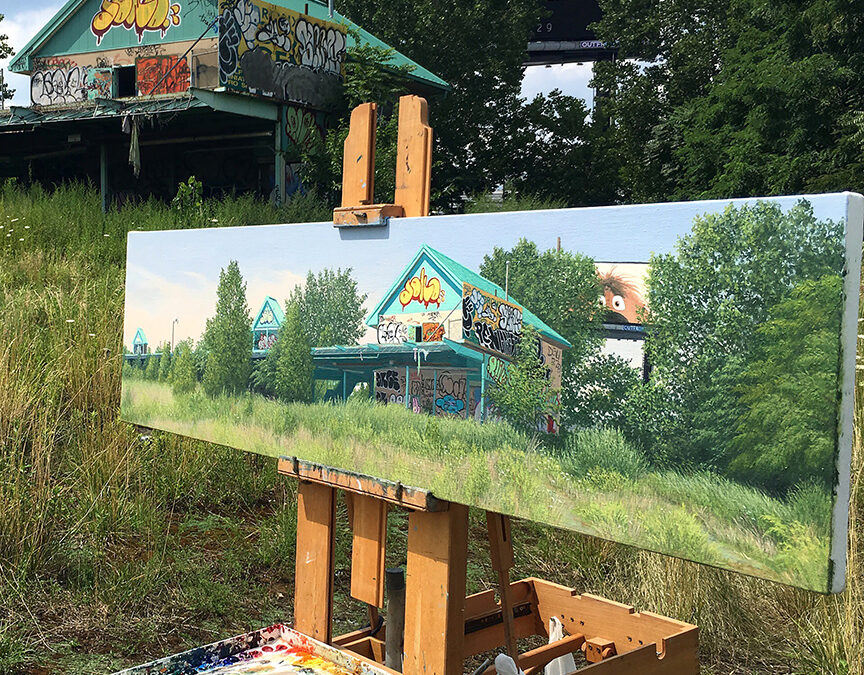
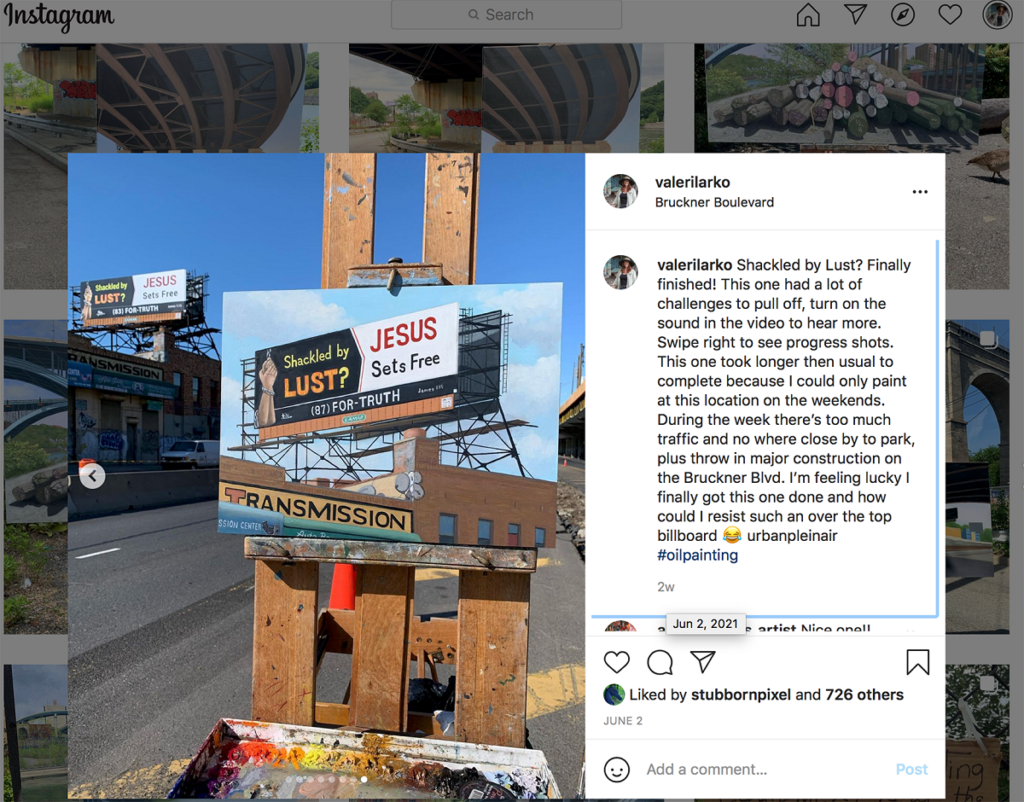
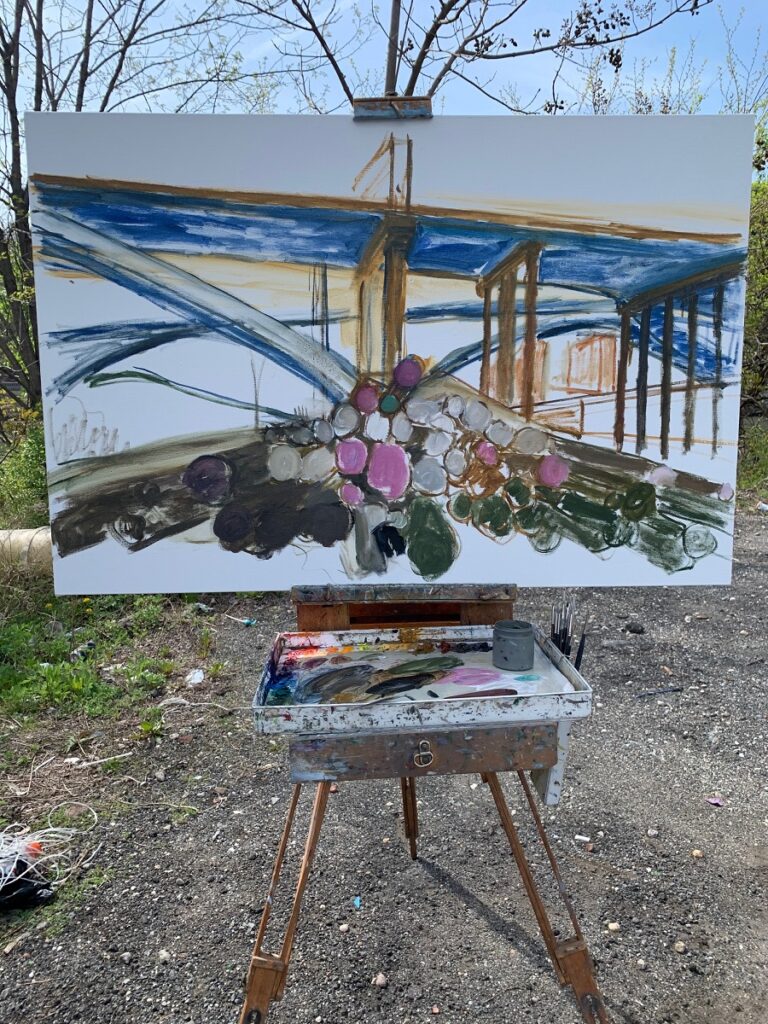
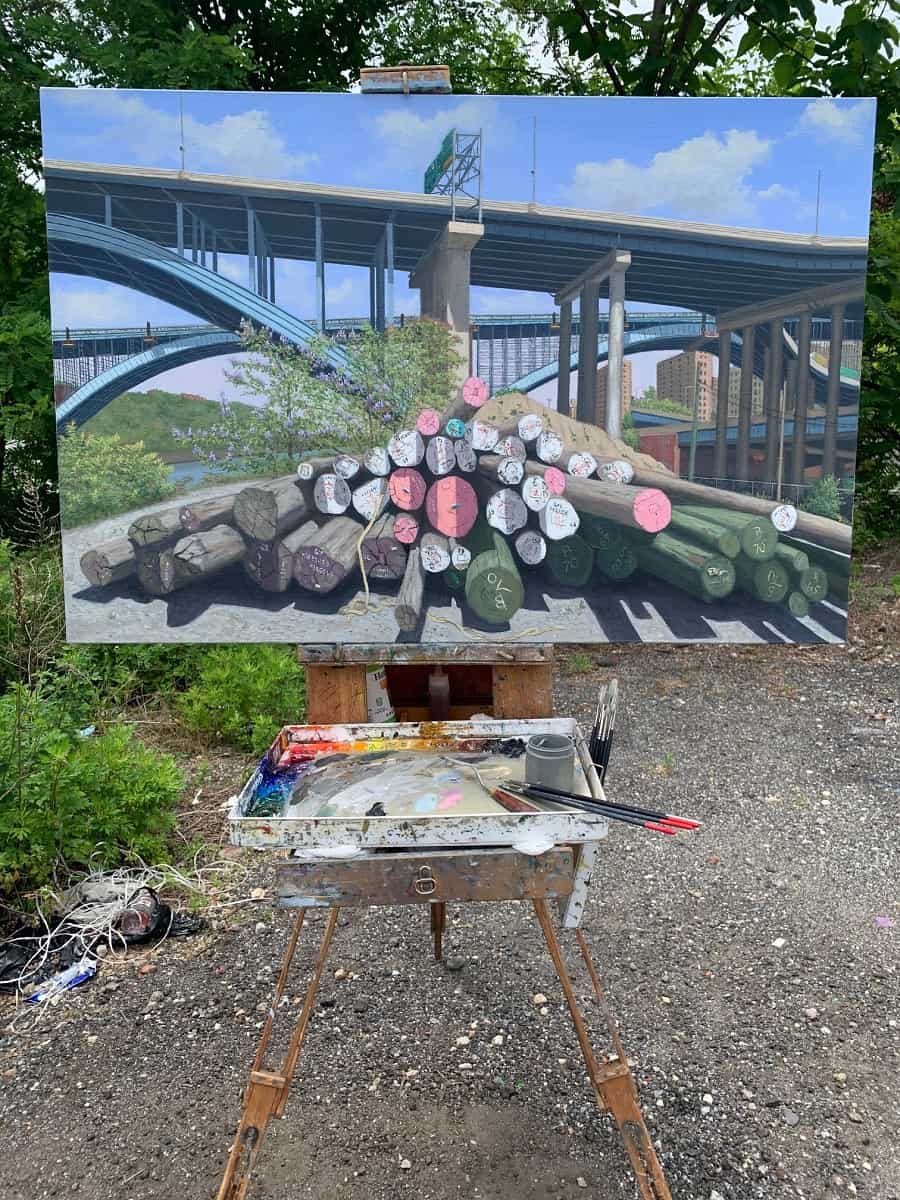
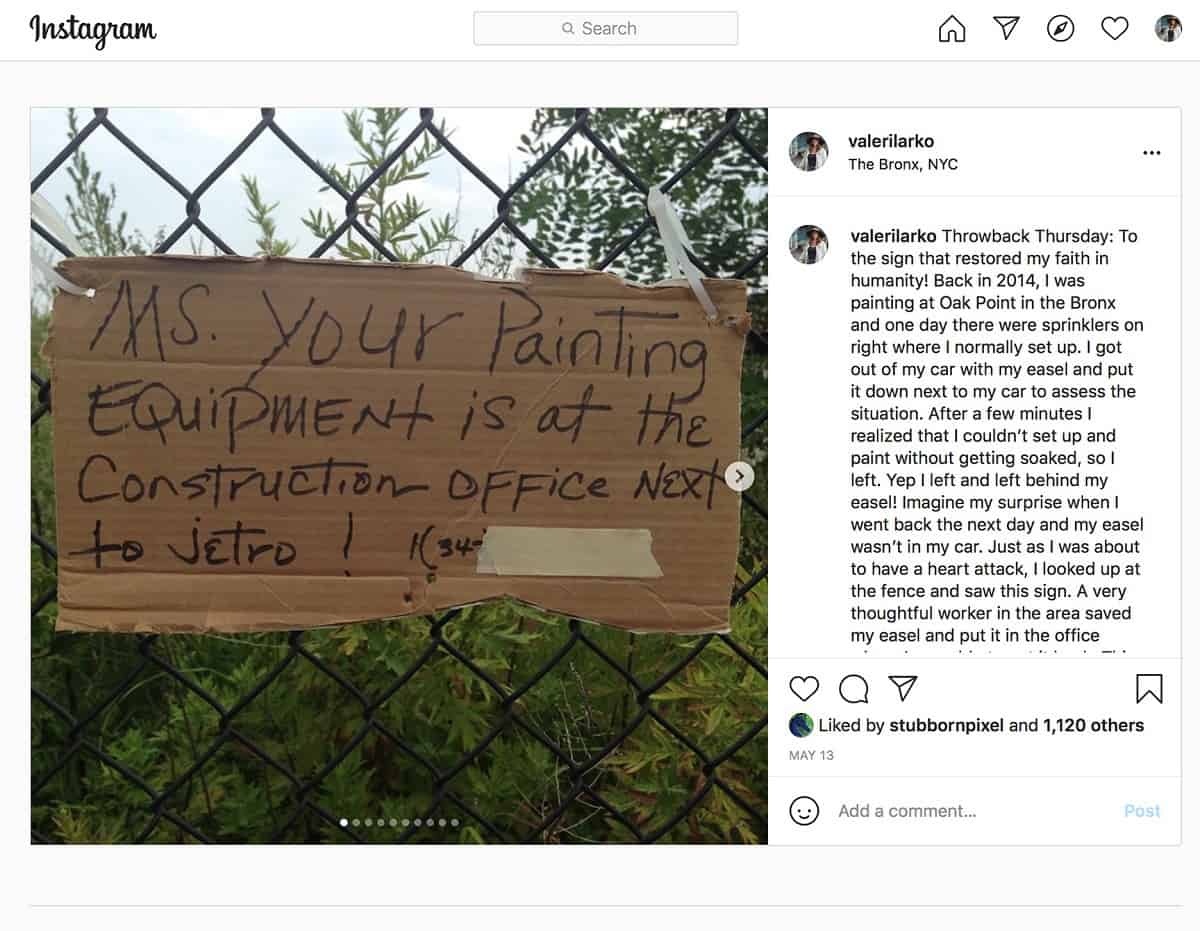
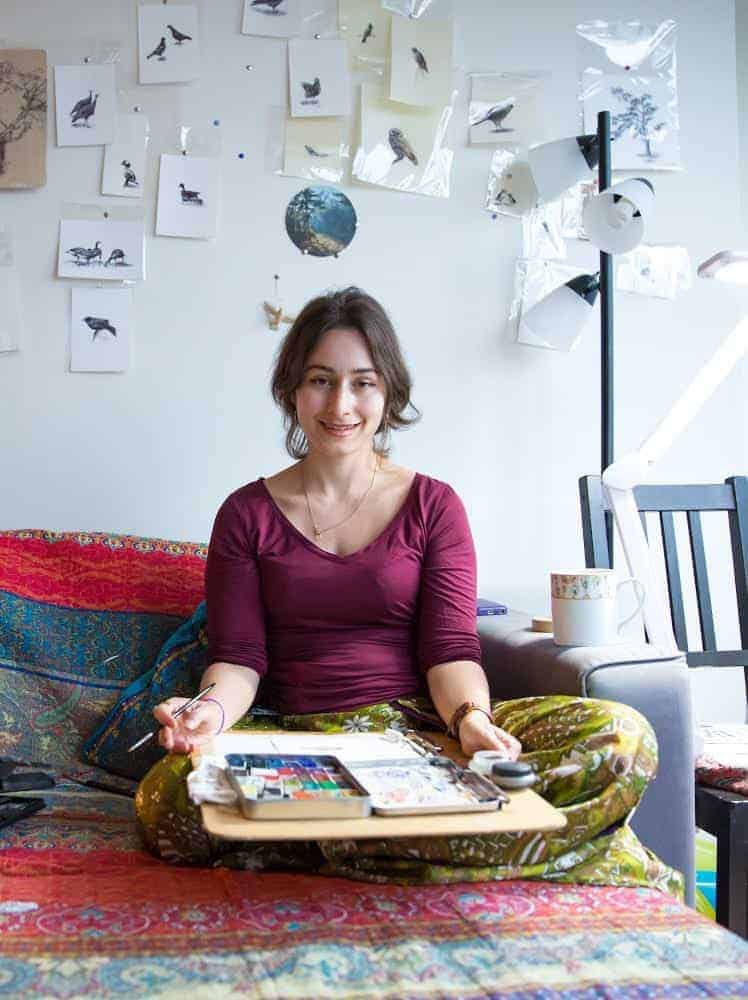

Excellent advice!
This was certainly an education in how Instagram works! I never knew the intricate nature of it!
Thank you Valeri for sharing!
This was very informative. Thanks a lot